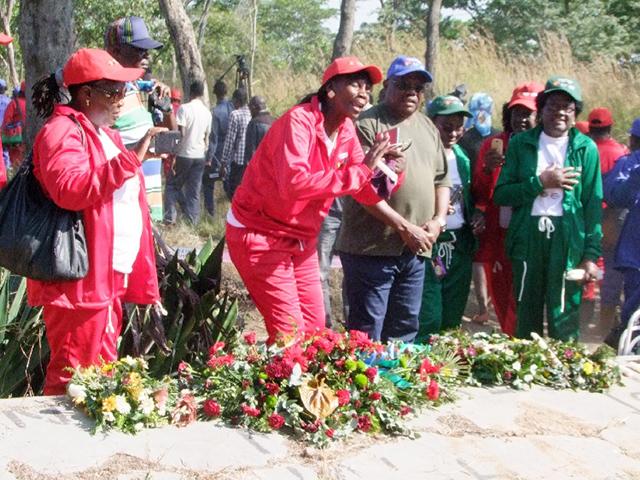RESIDENTS of settlements along the Gobabis-Otjinene road are dusting off their front yards to prepare for the resumption of the construction for the Gobabis-Otjinene road after a lull of many years.
This road has all the potential of resuscitating life along this path and of the Omaheke residents at large, as it will serve as a trajectory between Namibia’s north and the countries north of Namibia, who do business with Namibia and South Africa. Currently, trucks and small passenger vehicles from the North of Namibia have to go via Windhoek as a result of tenuous roads. So will a truck coming from Angola or the Congo have to travel to Gaborone in Botswana and Johannesburg in Gauteng South Africa, via Okahandja and Windhoek towards Gobabis and the Buitepos border post because of the absence of reliable roads from Okakarara via Otjinene and Gobabis to Buitepos.Let us for argument’s sake take two trucks from Otjiwarongo in the chest of Namibia. Truck A goes via Okahandja and Windhoek to Buitepos over a total distance of: Otjiwarongo-Windhoek 245 km, Windhoek-Gobabis 210 km and, Gobabis-Buitepos 113 km. This totals 568 km. Truck B travels from Otjiwarongo via Okakarara-Otjinene towards Buitepos: Otiwarongo-Okakarara 99 km, Okakarara-Otjinene 165 km, Otjinene-Gobabis 180 km and Gobabis to Buitepos 113 km. This adds up to 557 km. While the difference in distance may be negligible, the truck travelling via Windhoek has to put up with a number of risks such as accidents and other obstacles as a result of traffic jams, while the truck travelling along parts of Otjozondjupa and through Omaheke has minimal obstacles and stress. Such an option will also contribute to engineering economies along the roads through rural areas. Citizens along these routes would have the possibility of developing business points such as truck ports and this will go a long way in enhancing economic activities in the regions. There is therefore a case for the speedy construction of the Trans-Omaheke road whose completion is long overdue with funds budgeted for the road over years having been diverted intermittently to help complete other projects elsewhere.But the construction of the Trans-Omaheke road as an end in itself will not necessarily address the plight for a reliable road infrastructure. It has to be linked to a network of secondary roads leading to or departing from areas of population density and economic activity around the regions through which the road will travel. For instance, there are several roads linking places such as Okakarara-Okamatapati (about 100 km), Okakarara-Otjituuo (over 200 km), Okakarara-Ohorongombaranga towards Ovindjuee and further places (over 300 km), and Okondjatu-Ohorongombaranga towards Okamatapati (170 km). Other roads are, Okondjatu-Okahandja (280 km), Otjinene-Gam-Eiseb (over 300 km) Epukiro-Gam-Eiseb via Okatumba (300 km), Epukiro-Otjombinde (over 270 km), Otjombinde-Gobabis (over 300 km). Other roads are also from Gobabis towards Aranos via Aminuis (over 290 km), Gobabis-Aminuis (over 230 km), Aminuis via Corridor towards Otjombinde (over 470 km). Needless to belabour, these dirt roads span a total surface of over 2 500 km throughout parts of Otjozondjupa and Omaheke regions and they must link business ventures, economic activities and the citizenry to life-sustaining resources. Some of these roads have degenerated into a state of disrepair and contribute to untold accidents and other humanitarian constraints. There is therefore a case for a revamp of at least some of these roads as they must necessarily serve the underserved in these areas of human habitation.Still, all these do not take away from the initiative to restart construction of the very important road in the life of the country and its people.
Stay informed with The Namibian – your source for credible journalism. Get in-depth reporting and opinions for
only N$85 a month. Invest in journalism, invest in democracy –
Subscribe Now!










